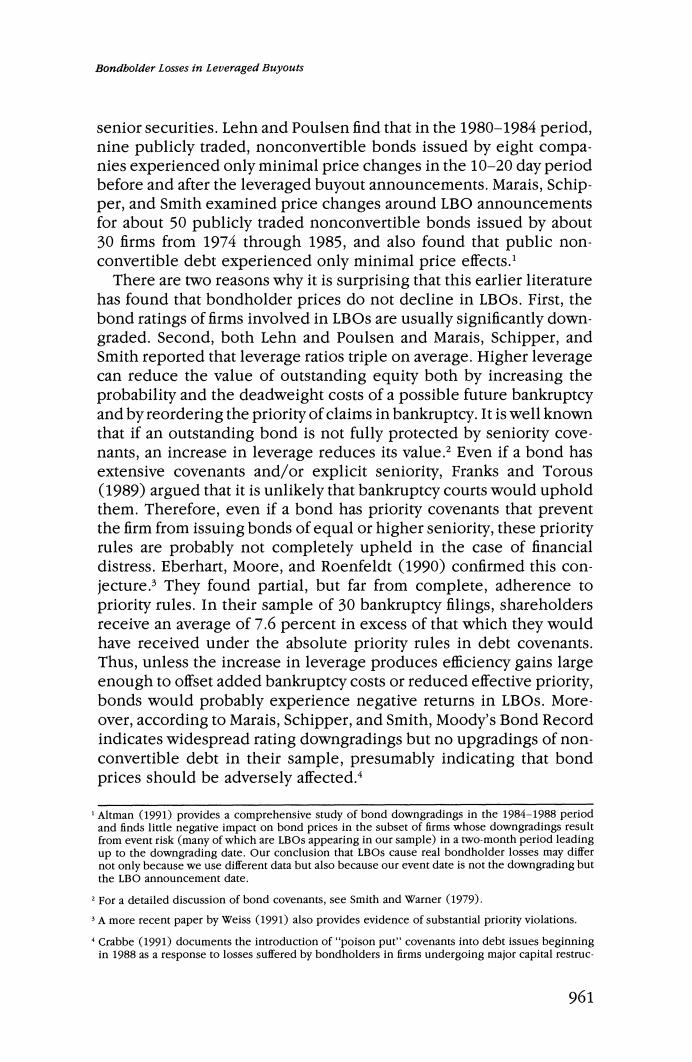正在加载图片...

Bondbolder Losses in Leveraged Buyouts senior securities.Lehn and Poulsen find that in the 1980-1984 period, nine publicly traded,nonconvertible bonds issued by eight compa- nies experienced only minimal price changes in the 10-20 day period before and after the leveraged buyout announcements.Marais,Schip- per,and Smith examined price changes around LBO announcements for about 50 publicly traded nonconvertible bonds issued by about 30 firms from 1974 through 1985,and also found that public non- convertible debt experienced only minimal price effects.1 There are two reasons why it is surprising that this earlier literature has found that bondholder prices do not decline in LBOs.First,the bond ratings of firms involved in LBOs are usually significantly down- graded.Second,both Lehn and Poulsen and Marais,Schipper,and Smith reported that leverage ratios triple on average.Higher leverage can reduce the value of outstanding equity both by increasing the probability and the deadweight costs of a possible future bankruptcy and by reordering the priority of claims in bankruptcy.It is well known that if an outstanding bond is not fully protected by seniority cove. nants,an increase in leverage reduces its value.2 Even if a bond has extensive covenants and/or explicit seniority,Franks and Torous (1989)argued that it is unlikely that bankruptcy courts would uphold them.Therefore,even if a bond has priority covenants that prevent the firm from issuing bonds of equal or higher seniority,these priority rules are probably not completely upheld in the case of financial distress.Eberhart,Moore,and Roenfeldt (1990)confirmed this con- jecture.3 They found partial,but far from complete,adherence to priority rules.In their sample of 30 bankruptcy filings,shareholders receive an average of 7.6 percent in excess of that which they would have received under the absolute priority rules in debt covenants. Thus,unless the increase in leverage produces efficiency gains large enough to offset added bankruptcy costs or reduced effective priority, bonds would probably experience negative returns in LBOS.More- over,according to Marais,Schipper,and Smith,Moody's Bond Record indicates widespread rating downgradings but no upgradings of non. convertible debt in their sample,presumably indicating that bond prices should be adversely affected. Altman (1991)provides a comprehensive study of bond downgradings in the 1984-1988 period and finds little negative impact on bond prices in the subset of firms whose downgradings result from event risk (many of which are LBOs appearing in our sample)in a two-month period leading up to the downgrading date.Our conclusion that LBOs cause real bondholder losses may differ not only because we use different data but also because our event date is not the downgrading but the LBO announcement date. 2 For a detailed discussion of bond covenants,see Smith and Warner (1979) 3 A more recent paper by Weiss (1991)also provides evidence of substantial priority violations. Crabbe (1991)documents the introduction of"poison put"covenants into debt issues beginning in 1988 as a response to losses suffered by bondholders in firms undergoing major capital restruc. 961